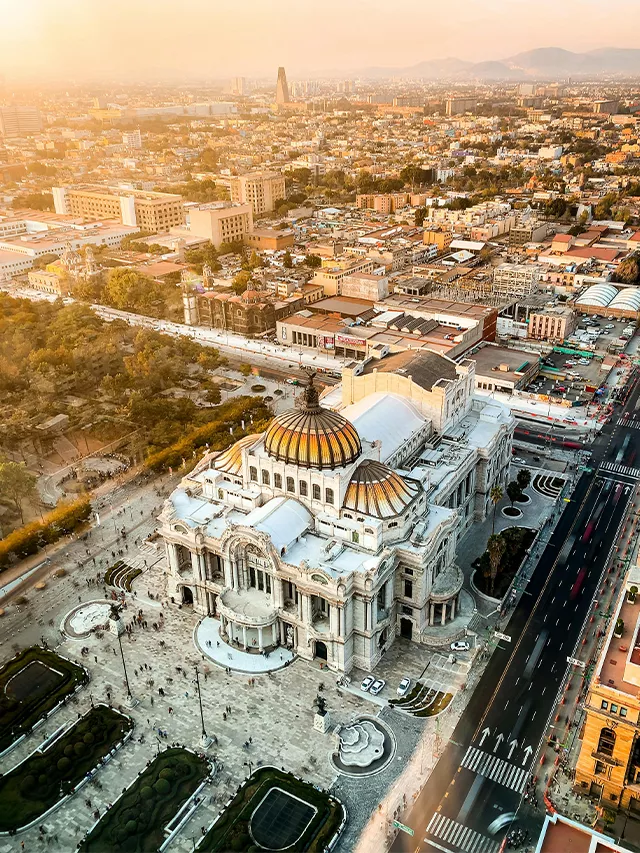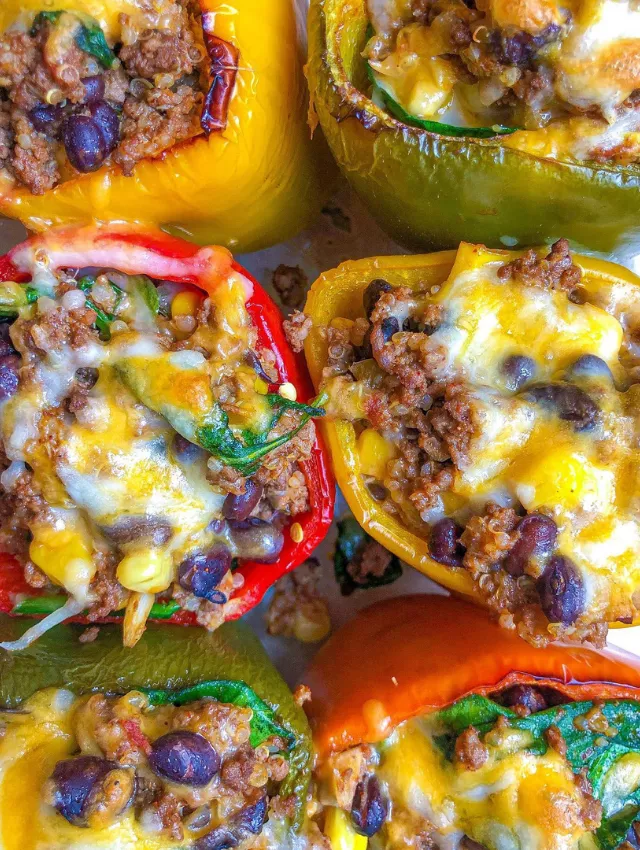Last Updated on March 28, 2025
Mexico City is an important city, not only for its country but also for the continent and the world. This imposing city stands out for having a population exceeding 9.2 million and more than 2,200 meters above sea level.
Due to its history and architecture, this site’s great cultural diversity makes it an exciting place for tourists who arrive year after year from different parts of the world.
If we add gastronomy to these items, it will be clear that Mexico City is an exceptional tourist attraction. In 2010, UNESCO decided to add Mexican food to the list of its intangible cultural heritage, and it is for this reason that food tours in Mexico City are very popular.
Foundation and History
Mexico City has a very rich and interesting history that dates back to Pre-Hispanic times. This city was founded in 1325 by the Mexica under the name of Tenochtitlán, on a small island in Lake Texcoco.
This city became the center of the Aztec Empire and, from the beginning, it stood out for its urban organization and the buildings that were built there.
After the arrival of the Spanish in 1519, the city was conquered in 1521 and rebuilt as the capital of the Viceroyalty of New Spain. During the colonial era, this site was consolidated as the political, economic,c and cultural center of the region.
In 1824, after the independence of Mexico, it became the Federal District and later, in 2016, it was officially renamed Mexico City, acquiring greater political autonomy.
It should be noted that this is one of the most populated cities in the world. The city’s population amounts to approximately 9.2 million people in its central area, while the metropolitan area of the Valley of Mexico has more than 22 million inhabitants.
This population density means that Mexico City has certain important points to address: housing, transportation, public services, and environmental pollution.
Climate
The climate of Mexico City is temperate, so this site is characterized by having moderate temperatures during most of the year. The average annual temperature ranges between 12 and 18 degrees Celsius, although it can vary depending on the area since the city is located in a valley surrounded by mountains.
The rainy season extends from May to October, with precipitation concentrated in the afternoons, while the dry period extends from November to April.
In recent years, the city has experienced climate changes including more extreme temperatures and atypical weather events, raising concerns about their effects on air quality and water supply.
Economy
Mexico City is the economic engine of the country and one of the most important economies in Latin America.
Its Gross Domestic Product (GDP) represents approximately 17% of the national total. The city’s economy is diversified and is based on sectors such as commerce, financial services, telecommunications and tourism.
In addition, the city is home to the headquarters of numerous national and international companies, as well as important government institutions.
Tourism plays a determining role, attracting millions of visitors annually thanks to its historical, architectural, and cultural wealth.
What To Do In Mexico City?
In this city, you can visit the Historical Center, which UNESCO has declared a world heritage site. In the Historic Center, you can begin to discover everything that this wonderful place has to offer.
A visit to the metropolitan cathedral is an obligatory stop while in Mexico City. You should also make time to stop by the Templo Mayor, where you can relive the time of the Aztec empire. You should also visit the Palace of Fine Arts, where you will enjoy the music and art that set the mood for a site with a unique architectural construction.
The Chapultepec forest is another place that should be in your plans because the castle inside is considered unique due to its construction style. Paseo de la Reforma is located in the same area, and as you walk along it, you can find monuments and emblematic points.
The Coyoacán neighborhood is famous for the Casa Azul, the site that was the home of Frida Kahlo and is today a museum in her honor. In San Ángel, you can visit the art market and walk through its iconic cobblestone streets. Another notable neighborhood is Xochimilco, where tourists can enjoy rides on trajineras, the classic and colorful traditional boats.
As if all this were not enough, you should also know that Mexico hosted the World Cup in 1970 and 1986. Therefore, visiting the legendary Azteca stadium can be another important place on your itinerary, especially if you are a fan of sports and soccer. In this stadium, Diego Maradona scored the goal that is considered the best in the history of the World Cups of this sport.
Discover a Unique Gastronomy
Once you are in Mexico City, you will be thinking about what you can eat for lunch or dinner or even for a mid-afternoon snack.
For this reason, we tell you which will be the most popular Food Tour in Mexico DF. In this tour, you can eat absolutely everything a tourist wants to know about the palate of Mexicans.
This tour will begin while you taste chilaquiles. Chilaquiles are triangular-shaped meals made from tortilla chips and accompanied by a spicy sauce.
Then, it will be the turn of the enchiladas with tasty sauce, another classic Mexican food dish that you will surely enjoy. Later, you can eat crunchy tortilla chips made in an artisanal way. These tortilla chips are usually accompanied by guacamole.
Of course, there will also be a place for traditional tacos. You can eat the tacos in a classically decorated place, and you will surely want to try more than one variety.
Dessert is also included. This entire tour will end with a popular sweet made in a typical bakery in Mexico City.
In this way, you can eat everything you like in the middle of a city that is completely attractive for each of its points of tourist interest and that, thanks to its gastronomy, has a distinctive touch.
Must Try Mexican Food
The traditional gastronomy of Mexico City is a reflection of its history and cultural diversity. Their menus are very varied and emblematic. These dishes combine Pre-Hispanic influences with elements of Spanish cuisine and other international traditions.
One of the most representative elements of the gastronomy of Mexico City is corn. This ingredient is the basis of the pre-Hispanic diet. Corn tortillas are the indispensable accompaniment to most dishes and also the main ingredient of tacos.
Tacos, in particular, are a benchmark in the capital: their origin corresponds to the influence of Lebanese migrants and their technique of cooking meat in a top-shaped dough.
Another traditional dish is the tamale. This menu also has pre-Hispanic roots. It is a corn dough filled with various ingredients, such as meat, sauce or beans, wrapped in corn or banana leaves and steamed.
Quesadillas, in Mexico City do not always have cheese. Quesadillas can be filled with stews such as huitlacoche, pumpkin flower or tinga. For their part, the tlacoyos are oval and are prepared with blue corn dough, while the pambazos are characterized by their bread dipped in red sauce and filled with potatoes and chorizo.
Among the most elaborate stews and dishes, mole, chiles and enchiladas stand out. Mole, with its complex mix of spices, chilies, and chocolate, is a symbol of celebration and is prepared in different varieties. Enchiladas consist of tortillas filled with chicken or cheese, bathed in sauces such as green or red, and decorated with cream, cheese, and onion.
The gastronomy of Mexico City is not only a delight for the palate but also a window to its history and culture. In every bite, centuries of tradition, creativity, and love for food are savored, making the capital an essential destination for lovers of good food.
Irresistible Cinco de Mayo Menu: Creating the Ultimate Feast in 7 Delicious Dishes
In the States, Cinco de…
What Research Shows on Food Dyes: Red Dye No. 3 Is Banned. Will the FDA Take Action on More Food Colorings?
In a significant move, the…
50 Well-Known Foods That Contain Red Dye No. 3 | 2025
In a world where health-conscious…
This Healthy 4th of July Menu Will Delight Your Guests’ Tastebuds
Please, every palate at your…
Meet Kourtney, a writer specializing in sex and relationships. Known for her honest and insightful approach, she explores themes of intimacy and personal growth. Her work combines personal anecdotes, expert opinions, and practical advice, helping readers navigate the complexities of modern relationships and embrace their desires. Kourtney's writing serves as a guide for those seeking authentic and fulfilling connections.
- This author does not have any more posts.






